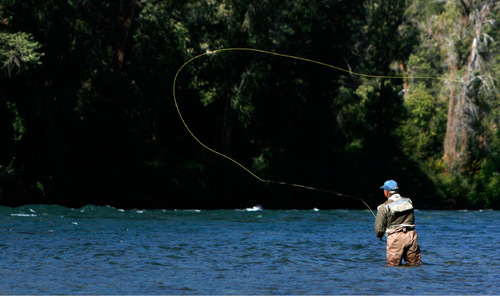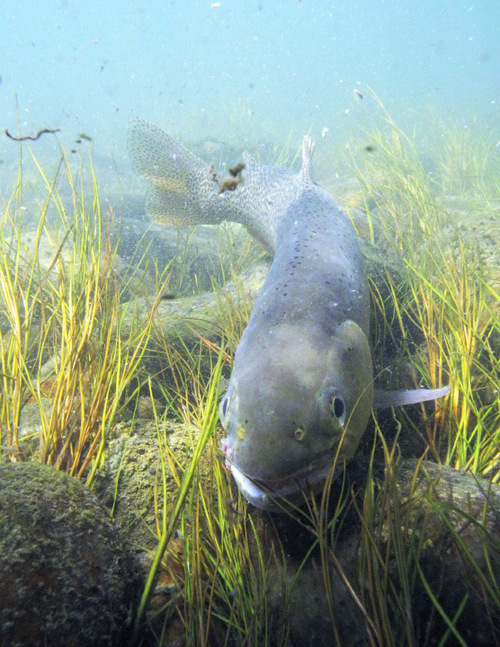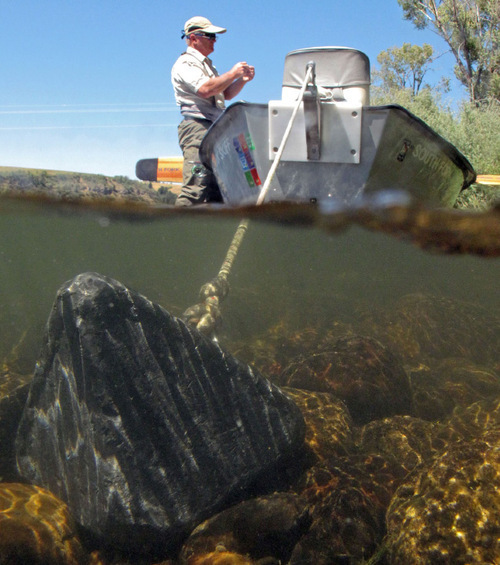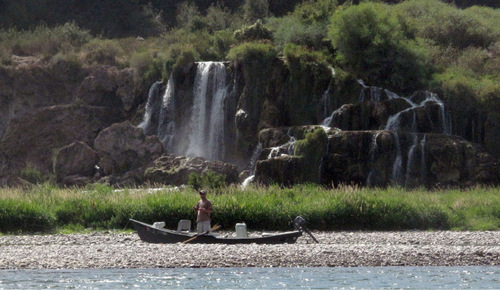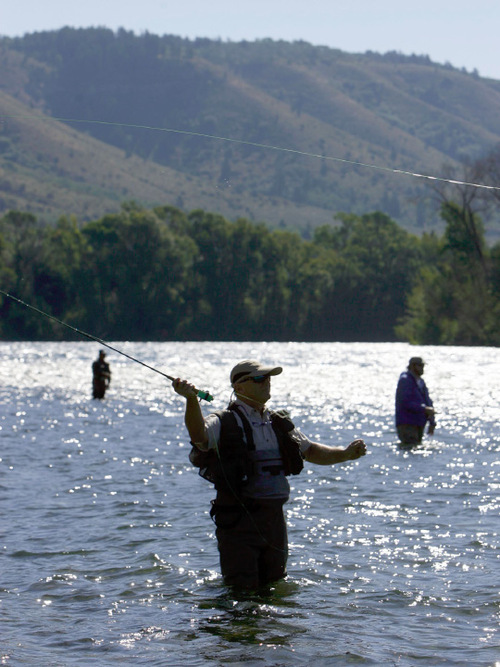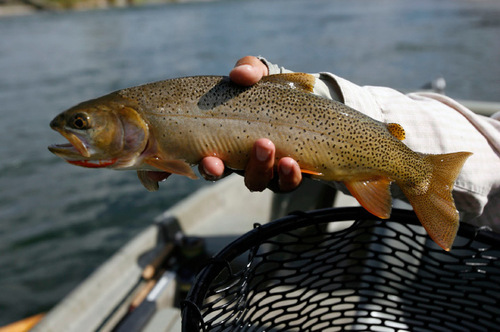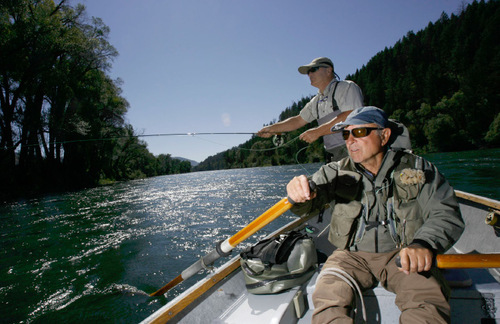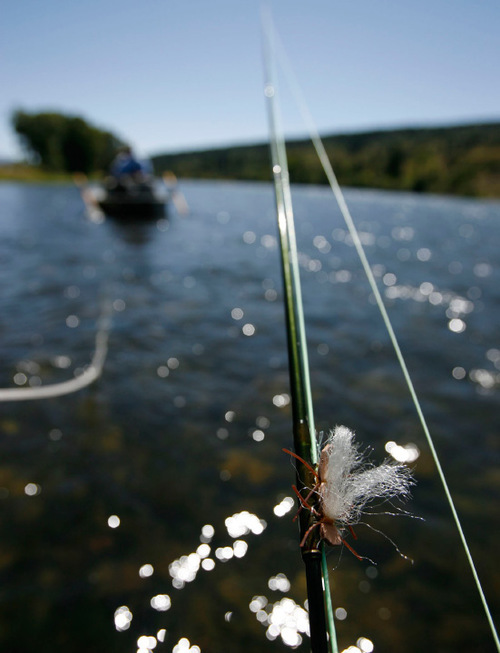This is an archived article that was published on sltrib.com in 2010, and information in the article may be outdated. It is provided only for personal research purposes and may not be reprinted.
South Fork Snake River, Idaho • All trout will take dry flies, but few do it with the style of the cutthroat trout. And few rivers provide the opportunity to catch Yellowstone cutthroat trout in their native waters like the South Fork of the Snake in southeastern Idaho.
For 60-some miles, the South Fork meanders from Palisade Dam near the Wyoming border to a meeting with the Henrys Fork southwest of Rexburg where the Snake River proper begins.
Both upper forks of the Snake are famous fisheries — the Henrys for its big rainbows and chunky browns and the South Fork as one of the last strongholds for Yellowstone cutthroat trout in their native habitat.
"That alone makes it unique. The South Fork cutthroat are also especially known to be willing to take a dry," said Dan Garren, a regional fisheries manager on the Upper Snake Region for the Idaho Department of Fish and Game.
Garren said cutthroat are most predominant in the upper stretches of the Idaho portion of the South Fork — the river gets its start in the southern reaches of Yellowstone National Park and flows through Wyoming before hitting Idaho.
There are 4,000 trout per mile in the upper river. The number shrinks as the river flows toward Henrys Fork, but the percentage of rainbow trout and brown trout increases downstream.
Therein lies a threat to the cutthroat. Because they both spawn in the spring, hybridization of cutthroat and rainbow trout occurs on the South Fork. With the number of genetically pure Yellowstone cutthroat waning, Idaho fisheries officials started making efforts to preserve the fish.
Two methods are being used. One is an attempt to separate rainbows — which had been introduced into the system by the state long ago, but have not been added for a couple of decades — and cutthroat during the spawn.
Officials figured out that the cutthroat usually headed up the tributaries to spawn and the rainbows tended to stay in the main river.
"We put up fish traps on the four main tributaries to allow us to control which fish head upstream to spawn," Garren said.
Workers watch for fish at the traps. If a cutthroat shows up, it is placed on the other side of the trap to continue its run to spawn. If rainbows show up in large numbers, the biologists load them up in a truck and take them to a community fishing pond in nearby Victor.
Realizing that their efforts may not be enough, Idaho wildlife officials also asked anglers to get involved.
New regulations were instigated in 2005. The limit on rainbow trout was eliminated, encouraging anglers to keep all they catch. Hybrid trout are also included in the open limit.
"Anything with white fin tips is ruled a hybird," Garren said.
The harvest rate on rainbows climbed from 7 percent to 20 percent in 2005, but Garren said anglers fell back into their old catch-and-release habits and the number has dropped again.
Idaho Fish and Game, in partnership with Trout Unlimited, announced another effort back in March to try to slow an increase in the spawning of rainbow trout in the system.
The Snake River Angler Incentive Program was designed to encourage anglers to keep every rainbow trout they catch by offering a reward for certain fish.
Biologists implanted 575 rainbow trout with tiny wire tags that cannot be seen by anglers. The tags carry a monetary value of $50 to $1,000 — the breakdown is 300 worth $50, 200 worth $100, 50 worth $200, 20 worth $500 and five worth $1,000.
Fish are to be cleaned and stored properly as those the angler does not want to keep are donated to those in need of food.
Anglers can turn in the fish or the head of the fish at the Fish and Game Regional office in Idaho Falls or at freezers placed at the Conant and Byington boat ramps, according to a news release from the state.
Garren said more than $2,000 worth of rewards has been handed out to about 10 winners so far.
"When we have anglers actively harvesting fish, we can get the rainbow population back down to a lower level a lot faster than relying on other means," Garren said.
Rainbow trout reward program
O To see a video on the rainbow trout reward program on the South Fork of the Snake River, visit tinyurl.com/2vtma5j


